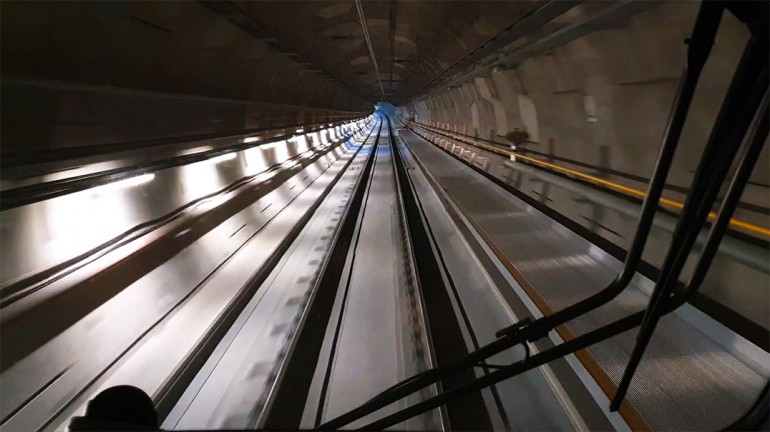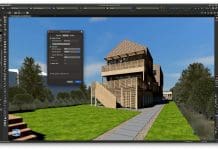In an interview with Malcolm Taylor, head of technical information at Crossrail Ltd, explains to PBC Today what BIM means to Europe’s largest construction project
Established in 2001, Crossrail Ltd (Crossrail) exists to develop a new service to tackle the lack of capacity and congestion on the existing network in the South East, ensuring that London continues in its role as Europe’s leading financial and business centre.
The scale of the project is immense and has earned the title of Europe’s largest construction project with a total funding envelope of £14.8bn. Work began in May 2009 with over 10,000 people employed on the 40 construction sites, clocking up an estimated 57 million working hours so far.
The man at the helm of technical information for Crossrail is Malcolm Taylor, responsible for BIM strategy and implementation; asset information management; technical data management; document control; GIS; and configuration management.
A Chartered Engineer and former rail director for a major global consultancy, he has over 30 years’ experience in the design, construction and maintenance of large-scale transportation projects around the world, with a particular emphasis on railway design, programme and project management.
Europe’s largest construction project therefore has the most in-depth utilisation of technical information to date. Luckily, with a seasoned and enthusiastic veteran such as Taylor at the helm, Crossrail is exploiting, exploring and developing technologies that will be copied and built upon in future projects.
In a project that began in a pre-BIM world, Taylor has seen information technology develop to the point whereby the operation is already achieving around Level 2. With many contracts signed before the Government’s BIM Strategy was released, Crossrail had already began some of the construction projects and were working in a BIM environment.
The competency of contractors to understand 3D modelling and information sharing was key, with Taylor stating that:
“We required designers for the main design work who were skilled in the art of 3D modelling. What takes basic 3D design into a level 1 BIM is pretty straightforward. Level 2 is more about the coordination of that design and merging together the various different types of models that one might have for civils, with architecture, mechanical and electrical, and bringing those together. We were confident that what we required our designers to do, was to work within our Common Data Environment (CDE) and that was something we set up very early on in 2008/9 within our CAD world.”
BS: 1192 – a single source of truth
Creating the CAD CDE was made an easier task by following the BS: 1192 “to the letter” according to Taylor. He said that:
“The standard described everything that we needed to do to create the CAD CDE and the approach that we needed for collaboration in design. That document in 2008 really did set the scene for BIM, even though it wasn’t called BIM at that time.
“This concept of a single ‘source of truth’ and one version of everything in one place that is owned by the client was, for us, a simple concept that meant it didn’t matter whether we had 2 designers or 20, as the same principles and processes apply. Once you’ve captured that spirit of the concept of a CDE and collaborative working, the size of a project doesn’t matter as long as everyone follows the rules. BS: 1192 created the BIM environment for us meaning that contractors weren’t requested to follow Crossrail’s methodologies. Instead, it showed them how to comply with the British Standard.
“No one had really implemented BS: 1192 to the same scale as CRL before, but the same principles apply for a small or big project – the concept of a= CDE with standard processes and standardised principles.”
Achieving ‘buy-in’ from all contractors was made easier with the launch, in association with software supplier (Bentley Systems), of the Information Academy. It was set up to provide hands-on training to the supply chain on the latest technology and software being used by Crossrail. The academy raises awareness in contractors about the way in which data is collected and managed, and also the processes and procedures. It really comes down to “awareness training” according to Taylor – not teaching people how to use 3D modelling, but teaching a standardised approach.
“People have bought into the idea. It’s free. The great thing is that it isn’t rocket science. People who can do 3D modelling can work in this new environment, and if you have good competent technical staff who understand 3D, it is not a big leap” he added.
Common data
According to Taylor, one of the biggest challenges in 2010 was the transfer of all records and documentation to a new CDE. The documents and data used to be on whole variety of IT drives – stored by different teams on different machines. When the main contract works commenced, they required all contractors to work in the document CDE as well as the CAD CDE. Taylor said that: “Contractors naturally want to do their own thing in their own systems, but the trick to getting BIM to work is to get everyone to work in one way.”
This desire to work in familiar systems is understandable, but on a project of this scale, consistency across contractors has to prevail. Taylor understood the need to persuade contractors and explain the reasons for utilising the CDE’s.
“Apart from telling them that contractually they are obliged to work within our CDE’s, we have to show why, and explain the reasons. By explaining the benefits, we ensured buy-in. All the good ones have adopted it and are doing amazingly well.”
To avoid any confusion in terms of legal ownership of the data, it remains firmly with Crossrail with a clear policy that contractors, as suppliers of data, are responsible for creating it correctly, and are liable if something should go wrong.
Lessons learned
For Taylor, the biggest lesson learned in the world of information is the need to be prescriptive as to exactly what outcomes are expected. He explained:
“In an instance where you have a project with 1 designer, 1 architect and 1 contractor, you can usually just let them get on and do it the way they want. But where you have several dozen designers and many dozens of contractors, you need to be very clear regarding outcomes, or you as a client will need to sort all the differences at the end.
“We thought we were being prescriptive enough, but in the future I would be even more specific. When we talk about having particular levels in a CAD model for instance, we don’t mind how it’s created, but the output is what we are being prescriptive about. There is a subtle difference between us telling people how to do things, which we don’t like doing, or being clear about what you want produced at the end of day. We are interested in output – not stifling creativity.”
Again, the importance of BS: 1192 is emphasised by Taylor due to the “beauty of its simplicity”. With over 1.25 million CAD models filed and 1.5 million documents in the CDE (growing daily), ensuring consistency is key and this is where the standard proves its worth.
The challenges ahead
There are still challenges to face in terms of ensuring all data can move through the different life-cycles – into operations and maintenance especially. The operator and maintainer are themselves trying to understand what the BIM world means to them.
This year, the PAS: 1192 part 3 was published and explains how the operations and maintenance world should work in a BIM environment. Crossrail is trying to make sure that the data created can not only work when passed over, but that the information is in the right place, of the right quality and at the right time. Taylor likens information to areas like plant, material and labour, which are a key resource in construction and design. He added that:
“The BIM environment, not just CAD, but data and documentation is changing project management significantly in the way in which we deliver major projects like Crossrail. Ultimately, the big challenge is getting it into the operation and maintenance world.”
However much information is seen as a key resource, it has to be the right information. It is important to be mindful of the amount of information used, or “else you get into a world of really large big data. We are interested in creating a digital legacy here – using the best information that fits the job of operations and maintenance, and having information available for the user of the railway” added Taylor.
The software
Different platforms are required for different intimations. For instance, one is required for CAD, for GIS, and for finance etc. Within BIM, this actually means different databases that are all linked together, enabling a user to extract information of any kind – even asset information whereby a maintenance manual could be retrieved. Having all this information connected changes the way in which projects are delivered, and if you know how to use databases, it’s not a difficult process.
By using a standardised approach in terms of file formats, the nightmare of data interoperability is eliminated. For Crossrail, the decision about which software to use was simple. Knowing what the operator and maintainer used, logically led to them using the same system.
For Taylor, an interesting area is one of work flows. He explained that by using simple transactional activities within the database, Crossrail did not need software for bespoke document management systems or contract administration systems. By using workflows within the databases, all valuable information is captured at source and stored immediately. “When we come to the end of Crossrail in 2018, we absolutely know where everything is. By having lots of drop down menus and templates we are automatically capturing information, thanks to the technology to hand.”
Benefits of BIM
A successful BIM project relies on people that can collaborate and understand and utilise technology. In the technology and project management world, another benefit is that it is possible to mix primavera schedules with CAD models and produce 4D sequences which show you in a visual way something being built. This is becoming amazingly important as one can view the timeline for what is proposed for construction.
Having good records management skills is equally important. In terms of basic competencies, good groundings are required in IT and database management. Taylor outlined that: “the technologies are already there, the processes are already there, but the trick really is to make sure you have the right people.”
Taylor talks of Crossrail as building two railways. One in the digital world, and one in the physical:
“We are building underground in a very busy city – the importance of being able to build it first of all in the virtual world to make sure all the pieces fit, is absolutely critical. We don’t want to find problems when 30 metres underground. Getting it right in the virtual world means we will save very significant amounts of waste for example from clash detection, but there are really interesting softer benefits such as safety too. We have seen 4D models used for safety briefings showing staff, through the time sequence, what has to be done and when. So now imagine an interactive model being taken into the operations and maintenance sphere – a station manager can use it to show staff where to store plant or for evacuation training etc. This visualisation world is already taking over the design and construction world, and ultimately it’ll move into the operations and maintenance arena as BIM gets extended post 2016.”
BIM level 2 by 2016 – are we ready?
For Taylor, he believes that most of the supply chain is ready. But he posed another interesting question: are the clients ready?
“From a Crossrail point of view, we want the ultimate operator and maintainer – Transport for London – to use the information we’re collecting in the best possible way. So one of our objectives is help the client to help them get ready. PAS: 1192 part 3, which came out earlier this year is a great help, but there’s still a way to go yet for some clients. Across construction, asking if clients are ready remains an unanswered question.”
. . . . . . . . . . . . . . . . . . . . . . . . . . . . . . . . . . . . . . . . . . . . . . .
Malcolm Taylor
Head of Technical Information
Crossrail Ltd
Tel: 0345 602 3813 24














